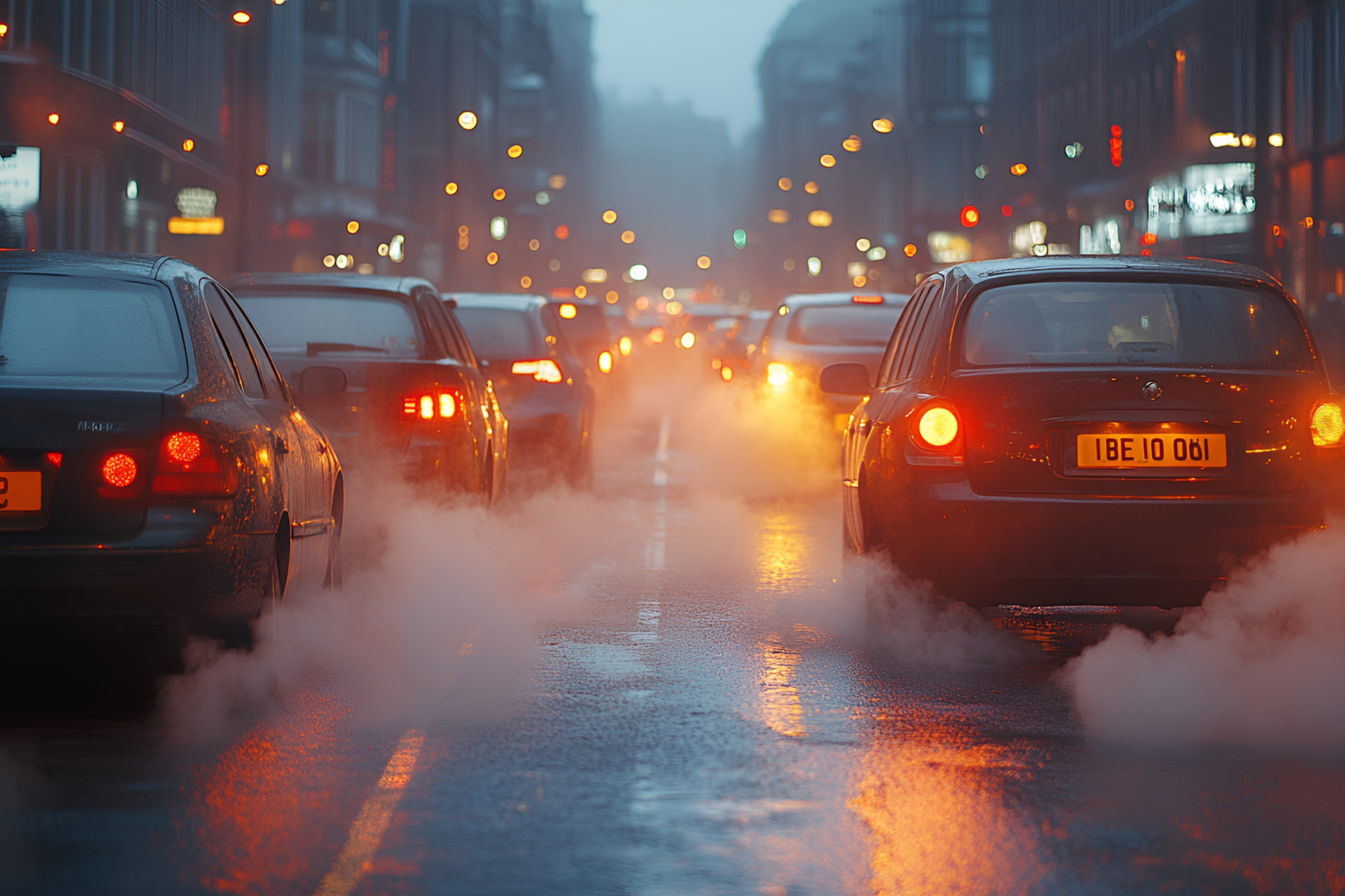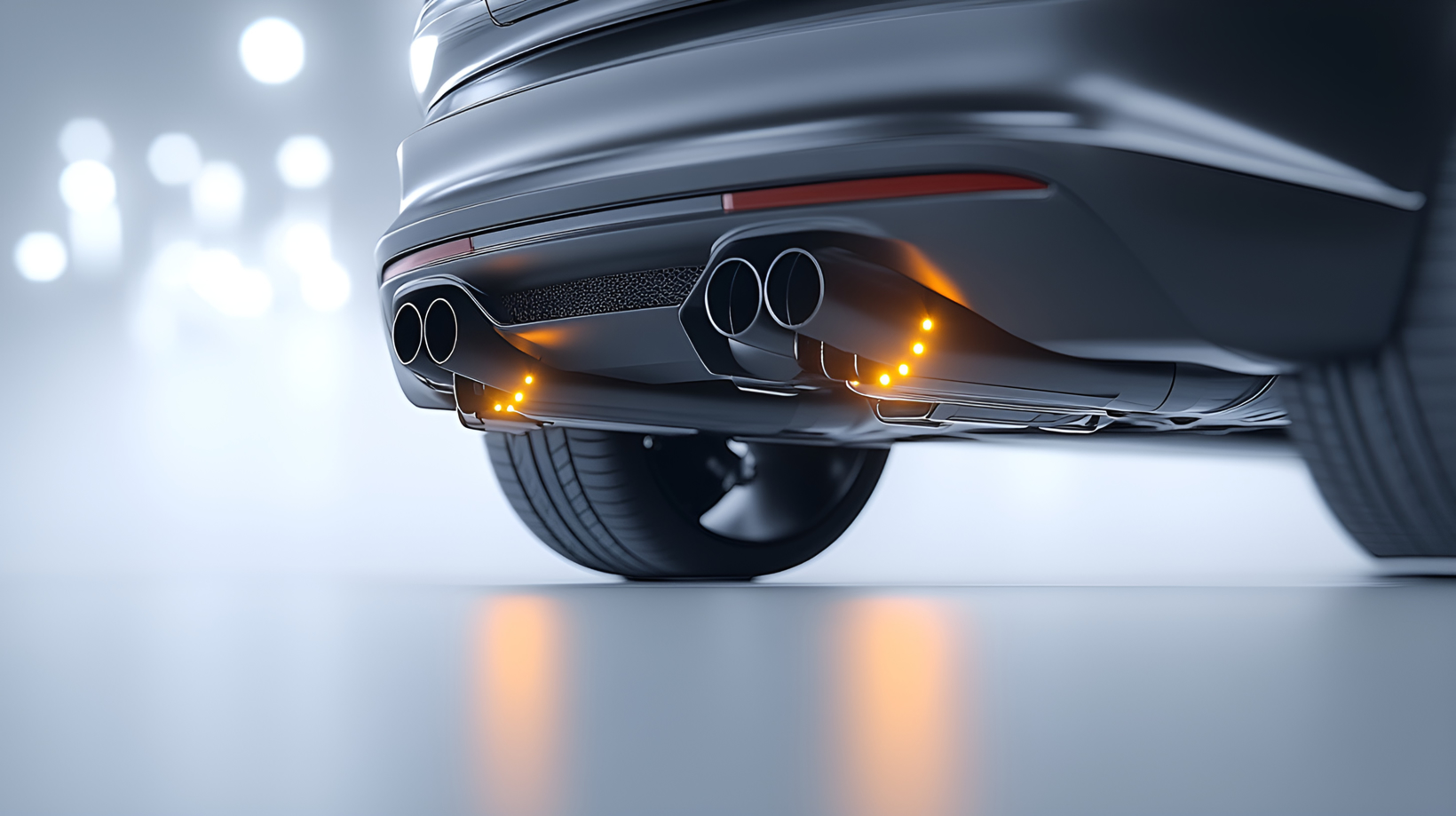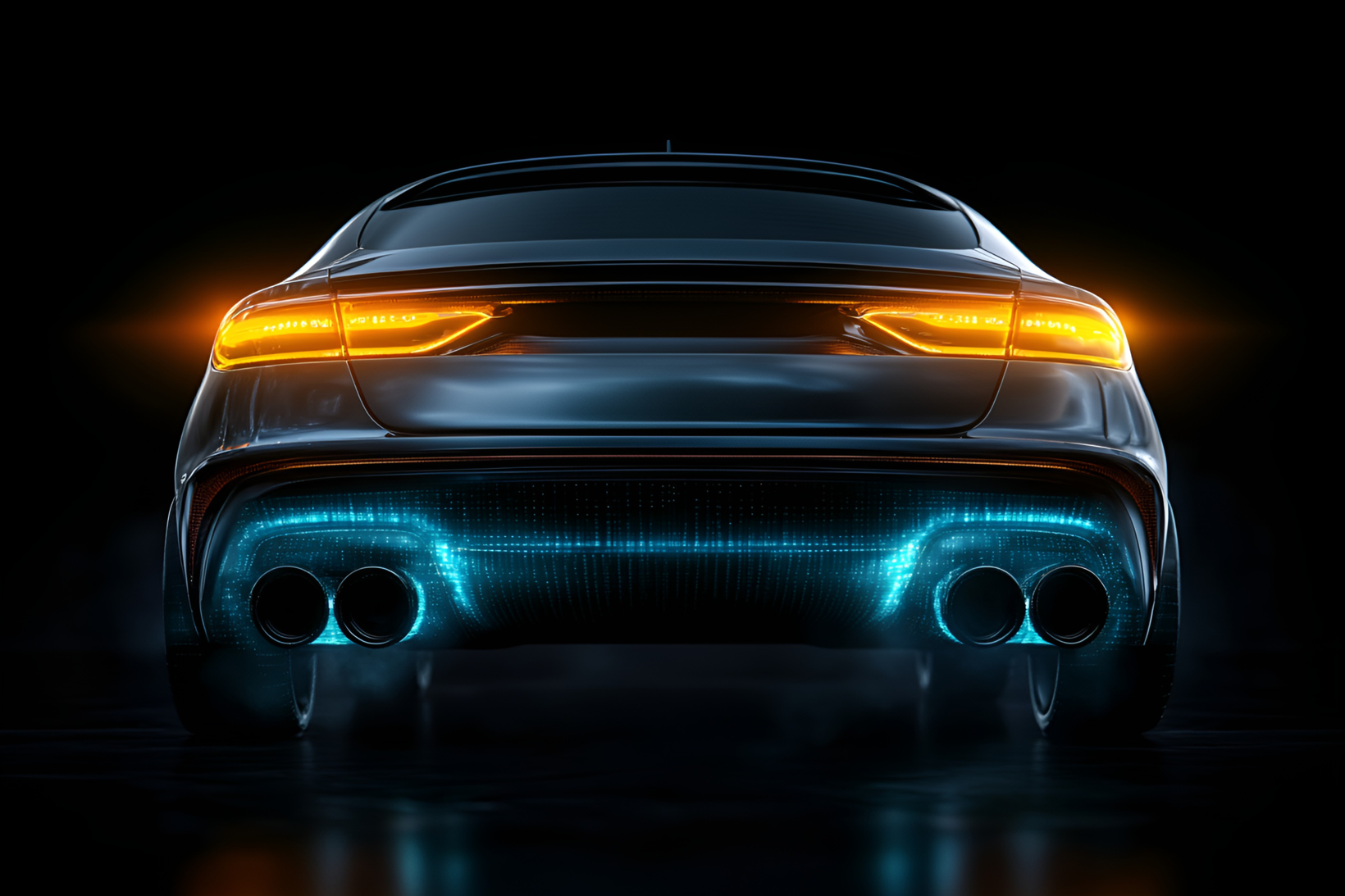National seven kicks off: Trillion-Yuan Track Tempts, How to Break the Emission Dilemma?
After the full implementation of the China VI emission standards, the research and formulation process of the China VII emission standards will significantly accelerate in 2025.
In July this year, at the 11th International Symposium on Vehicle Environmental Protection and Monitoring Technology held in Xiangyang, the topic of the China 7 emission standards gained renewed attention when Ding Ling, an expert who fully participated in the formulation of the standards, revealed that the "three-stage preliminary research is underway."
Recently, it has come to the attention of Gasgoo Auto that,The latest industry report released by Huatai Securities indicates that the market potential for post-treatment of exhaust emissions in the China National 7 (CN7) stage is expected to reach 100 billion yuan, making it one of the most promising growth segments in the environmental protection industry chain.

Image Source: Shetu.com
Mobile sources are a significant contributor to atmospheric pollutant emissions in China. According to data from the Ministry of Ecology and Environment, emissions of nitrogen oxides (NOx) and volatile organic compounds from mobile sources account for approximately 60% and 24% of the national total, respectively. The emissions of nitrogen oxides from mobile sources such as motor vehicles, non-road mobile machinery, ships, and railway diesel locomotives exceed 9 million tons.
Under the dual pressures of the "dual carbon" strategy and air pollution prevention and control, exhaust treatment has become a policy focus. The China VII standard, as the next phase of emission standards, is expected to further strengthen the control of NOx, particulate matter (PM), and cold start emissions based on the existing China VI standard. The technical approach may introduce new components such as electrically heated catalysts (EHC) and close-coupled SCR systems to meet more stringent emission limits.
What are the specific changes in the National VII emission standards compared to the National VI standards? Can the trillion-yuan market spawned by National VII bring about changes in the market landscape? In the current booming development of vehicle electrification and intelligence, what is the significance of the National VII emission upgrade?
The upgrade to National VII emissions standards is considered the strictest in history.
The technological upgrade of the China VII standards has gone beyond merely tightening emission limits, presenting new regulatory characteristics of "all elements, full cycle, and all scenarios," forcing the post-treatment system to move from component upgrades to system reconstruction.
Gasgoo Auto has noticed that in terms of core pollutant control, the China VII standards continue the approach of "differentiated levels of control." Within the standard framework, there are significant changes for light-duty vehicles. These include modifications to pollutant and greenhouse gas emission control requirements, corporate average emission control requirements, pollutant emission tests under extended conditions (Type VI tests), non-exhaust particulate matter emission tests (Type VIII tests), special requirements for vehicles using LPG, NG, methanol, and other alternative fuels, as well as the requirements for the accounting of corporate average emissions of pollutants and greenhouse gases.
It is worth noting that in recent years,Plug-in hybrid vehicles and range-extended vehicles are widely welcomed by consumers, and their market sales are growing rapidly.The National VII standards also classify the testing of these two types of vehicles under hybrid vehicles.The testing method for hybrid vehicles, in particular, will be incorporated separately into each type approval item.
The changes in the National VII standards for heavy-duty vehicles are not very significant, mainly involving the requirements for the On-Board Diagnostics (OBD) system, which are currently pending. Additionally, the measurement method for emissions using the chassis dynamometer now includes the measurement of energy consumption.
It should be noted that the name of the China National Stage VII Emission Standards has been upgraded from "Pollutant Emission Control Standards" to "Pollutant and Greenhouse Gas Coordinated Control Standards," incorporating greenhouse gases such as carbon dioxide into type approval tests and corporate average assessments for the first time, thereby achieving simultaneous advancement in pollution reduction and carbon reduction.
From the perspective of technological iteration, three major directions are noteworthy. To address the challenge of emissions reduction during cold start conditions, the electric heated catalyst (EHC) has become a mandatory option. Multiple patents and bench reports have confirmed that EHC can further shorten the time for the SCR to reach the injection temperature of 180°C during the WHTC cold start phase, reducing NOx weighted emissions by over 60% and meeting the next stage of stringent limits. The industry generally considers it a "standard configuration" for China VIIB.
In the field of deep nitrogen oxide treatment, diesel engines will generally be equipped with a close-coupled Selective Catalytic Reduction (ccSCR) system, along with an upgraded urea injection system and high-precision NOx sensors to further reduce ammonia slip rates. For gasoline engines, the performance of the Three-Way Catalytic Converter (TWC) needs to be enhanced, with the amount of catalyst expected to increase by more than 20%.
The monitoring system has been thoroughly upgraded. In the China VI stage, the onboard diagnostic system (OBD) will be fully upgraded to an "onboard monitoring system" (OBM), which mandates real-time monitoring of NOx and PM emissions. Heavy-duty vehicles are additionally required to monitor NH₃ levels. If emissions exceed the limit by 2.5 times, it will be automatically recorded, and in cases of severe exceedance, an alarm and operation restriction mechanism will be triggered.
The expansion of the regulatory scope of the China VII emission standards is more revolutionary. Benchmarking the Euro 7 regulations that have already come into effect in 2024,For the first time, China VII includes "non-exhaust particles" in type approval, clearly setting limit values for PN (particle number) emissions from brake dust and tire wear.Evidently, with the advancement in exhaust emissions control, this portion of emissions has become a significant proportion of particulate matter from motor vehicles, becoming a new focus for regulation.
It is worth noting that,New energy vehiclesFor the first time, it has been comprehensively included in the environmental access standards. In the SOCE (State of Charge Estimation) accuracy verification, the National VII standard stipulates that during the power battery aging degradation test, the SOCE should not exceed 98%, and the vehicle's cumulative mileage should not be less than 20,000 km, or the vehicle's cumulative mileage should reach 50,000 km. The validation test cycle must remain consistent with the initial test cycle, filling the regulatory gap for the entire lifecycle of new energy vehicles.

Image source: Shetu.com
When will the China VII emission standards be implemented?
The implementation time of the China VII emission standards is also an important issue of concern in the industry.
The development of motor vehicle emission standards in China can be roughly divided into four stages. From 2000 to 2014, during the stages from National I to National IV, the standards mainly drew on European standards and were appropriately adjusted to fit domestic conditions. At that time, there were no mature domestic manufacturers of exhaust after-treatment systems in China, and the market was essentially monopolized by overseas brands. Domestic engine manufacturers and OEMs had to purchase exhaust after-treatment components at high prices.
In 2017, the China V emission standard was implemented, upgrading from the China IV emission standard by lowering the limits for nitrogen oxides (NOx) and particulate matter (PM).
In 2020, the China VI emission standards were released. This is a scientific and comprehensive emission standard system independently developed based on the actual needs of China's environmental air quality control. In 2025, the research and formulation process for the China VII standards accelerated, and the Euro VII emission standards were officially implemented.
Each emission upgrade is a matter that affects the entire system. During the implementation phase of the China VI emission standards, we encountered numerous technical obstacles. For example, the closed-loop control system requires real-time linkage between exhaust detection and adjustment, but due to insufficient domestic technical verification, there was an abnormally high consumption of urea. Some car manufacturers adopted a multi-injection urea model to meet the standards.
Additionally, during the process of upgrading fuel quality to comply with China VI standards, there is a common issue of excessive sulfur content in domestic diesel (up to several hundred ppm), which leads to poisoning of the after-treatment system, torque limitation of vehicles, and affects normal usage.
Since 2025, the Ministry of Ecology and Environment has been intensively releasing policy signals. At the regular press conference in February, it proposed to "accelerate the revision and formulation of mobile source standards," and for the first time explicitly aimed to benchmark against Europe and the United States in initiating the formulation of China VI (National VII) standards. In May, it jointly issued with nine departments the "Opinions on Further Optimizing Motor Vehicle Environmental Supervision," which requires "accelerating the revision of China VI standards and researching the formulation of China VII standards." At the Xiangyang International Symposium in July, it was disclosed that the second phase of preliminary research for China VII has been completed and the third phase of technical validation is underway.
From the perspective of historical progression, it took about five years from preliminary research to the official release of the China VI emission standards. Since the preliminary research for China VII started in 2023, the progress has been noticeably faster than that of China VI. Therefore, the industry expects that the official text is likely to be issued by the end of 2026, but the specific release date will be subject to official notification.
The implementation timeline for the China VII emission standards needs careful consideration, especially after five years of the already stringent China VI standards. At present, there are indications of the implementation pace for China VII standards. Based on the traditional path of "key areas first, phased advancement" in China's emission standards and international experience, 2027-2030 will be a critical period for its rollout. This aligns roughly with the estimated timeline by expert Ding Ling. The China VII standards will represent significant changes compared to previous ones, possibly being released in 2027 and formally implemented in 2029.
The industry also According to the implementation logic of the Euro 7 standard, where light-duty vehicles precede heavy-duty vehicles and new models precede existing models, China might adopt a more detailed phased strategy for its China VII standard.
For example, key regions such as Beijing-Tianjin-Hebei and the Yangtze River Delta may take the lead in implementing the regulations for light vehicles in 2027, expanding to the national light vehicle market in 2028. Heavy vehicles might be delayed until 2029 for new model approval and fully implemented by 2030. This approach aligns with the policy tradition of pilot programs in key regions and allows the industry chain time for technological upgrades and... The time window for climbing.

Image Source: Shetu.com
The Dilemma of Balancing Environmental Vision and Industrial Reality
The implementation of the China VII emission standards will stimulate the growth potential in the exhaust after-treatment market. According to a research report by Huatai Securities in October 2025, the total market potential at the China VII stage is expected to reach 100.1 billion yuan, representing an approximately 50% increase from the 66.8 billion yuan at the China VI stage. The cumulative incremental market potential from 2027 to 2030 is expected to exceed 200 billion yuan.
Specifically, the carrier market increased from 10.5 billion yuan to 15.8 billion yuan, benefiting from the technological upgrades of refining the pore size and thickening the walls of honeycomb ceramics.
In addition, the scale of catalysts, packaging, and electronic control systems increased from 56.2 billion yuan to 84.3 billion yuan, with high-precision sensors, EGR valve groups, and other core components being the main drivers of the increase.
For different vehicle types, the value of post-treatment per heavy-duty vehicle is expected to increase from 25,000 RMB to approximately 35,000 RMB, with the increment mainly coming from new modules such as ccSCR and OBM systems. For light-duty vehicles, the value is expected to rise from about 3,000 RMB to around 4,500 RMB, with EHC and upgraded TWC as the main contributors.
In such a considerable market space, the upstream and downstream of the industry chain are bound to usher in a profound period of restructuring.
Let's look at it by sector to see the changes. In the upstream materials field, rare earth-based catalysts are rapidly replacing precious metals due to their cost-effectiveness. According to information, Bojing Technology, a subsidiary of National Ceramic Materials, has disclosed that the demand for cerium-zirconium solid solutions as catalytic additives is rapidly expanding with the upgrade to China VI and China VII standards. The industry generally expects an annual compound growth rate of about 30%.
In the field of honeycomb ceramic carriers, National Ceramic Materials has become the world's third-largest producer of honeycomb ceramics. Currently, the company's market share of honeycomb ceramics in China has exceeded 15%, making it the third-largest supplier globally, following Corning and NGK.
In the capital market, in the first half of 2025, equity investment in the exhaust after-treatment sector is also increasing, with funds concentrated in EHC technology, high-precision sensors, and OBM system development.
Certainly, the implementation of the China VI-b standards has not been smooth, with ongoing debates surrounding its necessity, technical feasibility, and cost affordability, reflecting the complex interplay between environmental policies and industry interests.
Supporters believe that the implementation of the China VI emission standards is an important way to improve air quality. For example, in mega-cities like Beijing, Shanghai, and Guangzhou, motor vehicles have become the primary source of PM2.5. During the Beijing Winter Olympics, temporary emission reduction measures were implemented, resulting in a decrease in PM2.5 concentrations, which brought about the "Winter Olympics Blue" phenomenon, demonstrating the effectiveness of strict controls.
Opponents argue that the cost of industrial upgrades brought about by the China VII emission standards must be brought to attention. An engineer from an automotive supply chain company candidly stated that during the China VI research and development phase, the company had already spent a large amount of money, and the investment for China VII might double. For companies whose annual sales do not reach a certain scale, such doubled investment would only lead to a greater survival crisis.
Certainly, the issue of the China VIIB (National VII) emissions standard ultimately focuses on the rationality of policy coordination. Although the rumor that "vehicles meeting China IV (National IV) standards will be banned from entering cities by 2030" has been debunked, the compensation mechanism for phasing out China IV and China V vehicles has yet to be clarified. Therefore, industry insiders are calling for the implementation of the China VIIB standard to be postponed until after 2028, and for the simultaneous establishment of a phased-out subsidy system to alleviate financial pressure on the supply chain and end users.
The summary of Gaishi
In the long run, the implementation of the China VI emissions standard is an inevitable choice for China's automotive industry to participate in global competition. Essentially, this impending industrial transformation surrounding the China VI emissions standard will be a painful transition from scale expansion to quality improvement. The 100 billion yuan market space for post-treatment is not only a direct product of environmental policies but also a value return of technological innovation. There is no shortcut to mobile source pollution control, and the short-term pain brought about by the standard upgrade will eventually lead to a fundamental improvement in air quality and a lasting enhancement in industrial competitiveness.
【Copyright and Disclaimer】The above information is collected and organized by PlastMatch. The copyright belongs to the original author. This article is reprinted for the purpose of providing more information, and it does not imply that PlastMatch endorses the views expressed in the article or guarantees its accuracy. If there are any errors in the source attribution or if your legitimate rights have been infringed, please contact us, and we will promptly correct or remove the content. If other media, websites, or individuals use the aforementioned content, they must clearly indicate the original source and origin of the work and assume legal responsibility on their own.
Most Popular
-

List Released! Mexico Announces 50% Tariff On 1,371 China Product Categories
-

Nissan Cuts Production of New Leaf EV in Half Due to Battery Shortage
-

New Breakthrough in Domestic Adiponitrile! Observing the Rise of China's Nylon Industry Chain from Tianchen Qixiang's Production
-

Dow, Wanhua, Huntsman Intensively Raise Prices! Who Controls the Global MDI Prices?
-

Clariant Unveils Cost-Cutting Plan Details, Plans to Shut Down Multiple Plants






